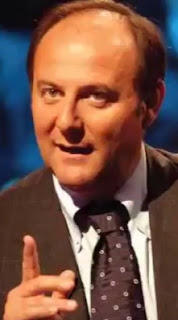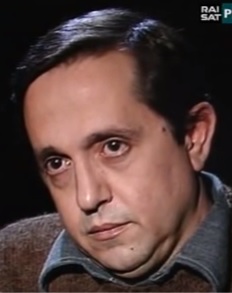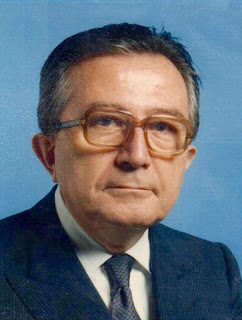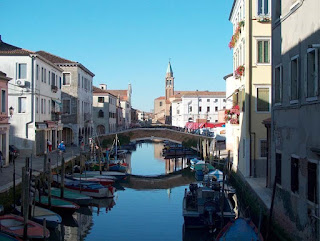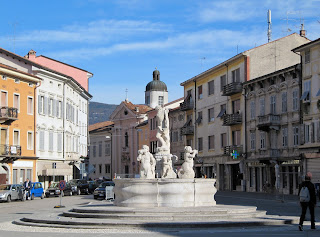Giant from Lodi province who plays in America’s NBA
 |
| Danilo Gallinari joined New York Knicks in 2008 after entering the draft |
Danilo Gallinari, the only Italian-born player currently active in America’s National Basketball Association, was born on this day in 1988 in Sant’Angelo Lodigiani in Lombardy.
Only nine Italian-born players have participated in the NBA – America’s premier basketball league – since its formation in 1946.
Gallinari, who stands 6ft 10ins tall, has played for six NBA teams, the latest of which is Boston Celtics.
Previously he had played for New York Knicks, under the coaching of Mike D’Antoni, is an American-born former player who is now an Italian citizen, the Denver Nuggets, Los Angeles Clippers, Oklahoma City Thunder and Atlanta Hawks.
Gallinari, whose father, Vittorio, played professional basketball for teams in Milan, Pavia, Bologna and Verona, began his career in 2004 with Casalpusterlengo, a third-level Italian team from a town about 25km (15 miles) from his home in Sant’Angelo Lodigiano.
He moved up a tier in 2005 by joining Armani Jeans Milano and then Edimes Pavia, where in 2006 he was named best Italian player in the Italian League Second Division, despite missing half the season through injury. Read more…
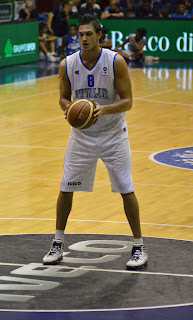 |
| Danilo Gallinari, representing the Italian national team in 2010 |
This earned him a move to his father’s old club, Olimpia
Milano, in which he was named as the First Division’s best player under the age
of 22 in his first season and topped the league’s overall efficiency ratings in
2007-08.
Gallinari also represented Olimpia Milano in the elite
EuroLeague – basketball’s equivalent of the Champions League in football –
scoring 27 points in his final game of the 2007-08 campaign against Maccabi Tel
Aviv.
His move to the NBA came in 2008, when he took advantage of
an escape clause in his Olimpia Milano contract that permitted him to take up
any opportunity to play professionally in the United States and entered himself
for the NBA draft.
New York Knicks acquired him as the sixth draft pick and
gave him a two-year contract.
Gallinari’s time in the NBA has been bedevilled by injuries
yet his performances have improved year on year.
He missed a large part of his debut 2008-09 season with back
problems and, after sustaining an anterior ligament injury that ended his
2012-13 season at Denver early, he had to sit out the entire 2013-14 season as
he underwent rehabilitation.
Gallinari, who plays as a small forward/power forward, was
also sidelined for the final 22 games of the 2015-16 season with Denver because
of an ankle injury.
He was the biggest acquisition of the summer for Los Angeles
Clippers when he joined them in 2017.
Gallinari’s statistics, however, demonstrate how he has
become an increasingly valuable player when fit. In 2009, he set a career-high points haul of
30 for New York against Philadelphia 76ers; his current career-high stands at
47, which he recorded in a double-overtime loss to Dallas Mavericks for Denver
Nuggets in 2015.
UPDATED: August 2022.
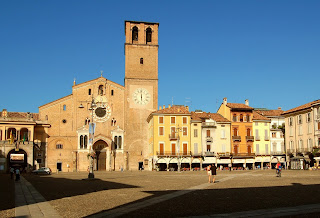 |
| A sunlit Piazza della Vittoria |
Travel tip:
Both Sant’Angelo Lodigiano and Casalpusterlengo are municipalities
in the province of Lodi, an historic small city on the banks of the River Adda
that was the property of the Visconti family and the Sforzas in the 15th
and 16th centuries, when it had great value as the central town of a
richly fertile agricultural area, which it is to this day. Its prosperity was the consequence of a
system of artificial rivers and channels, work on which began in the 13th
century, that was created to irrigate what had previously been arid and
unusable land. The heart of the city is the beautiful Piazza della Vittoria.
 |
| The Mediolanum Forum, home of Olimpio Milano |
Travel tip:
The Olimpio Milano team, sometimes known as Emporio Armani
Milano, play their home matches at the Mediolanum Forum, an indoor sports and
concert arena with seats for 12,700 spectators, situated in the Assago suburb
of Milan and now accessible by a direct Metro service from the centre of the
city. Assago is also home to the Italian
headquarters of Nestlé.
